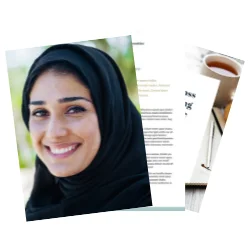Creativity is a distinct state of mind for a human being whose goal is to generate ideas or solutions to problems. These unique and new solutions and ideas help add new information and ideas to human production with real benefits that can be applied to all aspects of life. Creative thinking involves seeing familiar things in a certain way that familiar and creative people can see what others can’t see, Creativity is a unique energy through which two different topics can be studied and worked to find commonalities that bring them together, So is the ability to resolve. Solve problems in a new way, and impress listeners and interlocutors, And to reach creative thinking through creative thinking elements.

Creative thinking is: the ability to generate a new and useful idea that has not been addressed before, A skill that enables you to create unique and unconventional original ideas. Creative thinking can be expressed in a number of ways, The artist can create a beautiful and unique logo, A different strategic lawyer may find it unconventional to defend clients, Photographers take unusual pictures at work, Teachers may discover revolutionary theories in mathematics or physics that make it easier for students to learn and save them time and energy.

This does not mean that creative thinking is limited to artists, painters, designers or writers, It is an important feature for all professionals and individuals, But it enriches the fields of science, mathematics and engineering, It leads innovation and progress in all areas, Especially. It is a scientific field where anyone can lead creative thinking. His lifestyles and systems are different from those of others.

Fluency
means being able to find a large number of alternatives, solutions, ideas or uses when researching a particular topic, Individuals can find these suggestions quickly and easily. Wisdom and fluency of form.
Flexibility
It is the ability to discover new, innovative and unique ideas that lead to unexpected solutions to problems, and the ability to innovate and change the way of thinking as required by the situation, flexibility compared to the term mental inertia, Depending on the pre-defined mental model and not allowed to change it as needed, There are several forms of flexibility, Including automatic flexibility, And adaptive flexibility.
Authenticity
Flexibility is one of the most important elements of creative thinking associated with the concept of creativity, It means bringing something new and unique, Authenticity is a common factor between the definition of creative thinking, It focuses on creative outputs as a test against creativity. Can be judged, One of the barriers to authenticity is the lack of a clear reference or basis to judge creative work, to judge an idea or to solve a particular problem that meets the requirement of authenticity.
Overs and downs.
This means adding new ideas and details to an existing idea, This process helps to develop this idea or previous painting, and make it more effective than before, and help enrich and implement them, It is therefore an element that must be known as creative thinking.
Sensitivity to problems
it means sensing a problem or detecting weakness in an environment, This suggests that some people are able to perceive, observe and verify the problem faster than others. and existing ideas.
After identifying the elements of creative thinking, It is necessary to mention barriers to creative thinking or reduce the importance of creative thinking, Among them are: [3]






In this article, we’ll talk about the concept of training to prepare a Powerpoint presentation on coach training. The training



